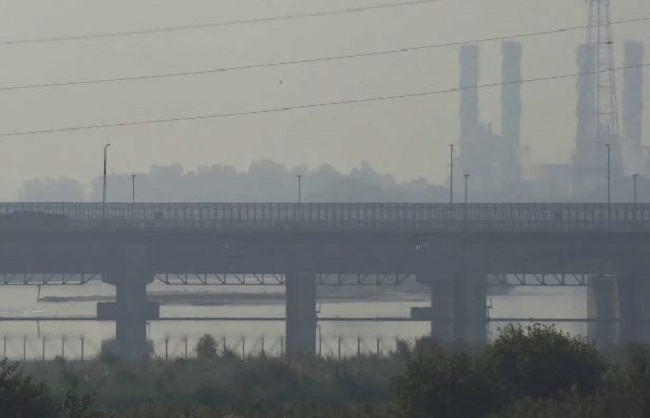
New Delhi: The overall air quality in the national capital on Wednesday morning was recorded in the 'moderate' category, with the Air Quality Index (AQI) at 190, as per SAFAR-India.
As per the latest data from the System of Air Quality and Weather Forecasting and Research (SAFAR), the air quality around Delhi University was recorded at 273 (poor) in the morning hours, while the IIT area in New Delhi was at 173 today.
According to the SAFAR, the air quality in Lodhi Road was recorded at 149 which falls in the 'moderate' category.
As per SAFAR-India, the air quality stands at 190 this morning in areas including Signature Bridge and Akshardham.
As per the data, the AQI stood above 300 in at least 13 pollution hotspots in Delhi on Tuesday.
Meanwhile, Noida recorded an AQI of 219 (poor) and Gurugram 169 (moderate).
The statement said that the predominant surface wind is likely to come from Northwest directions in Delhi with wind speeds 12-16 kmph becoming calm in the evening, with clear sky and mist in the morning on October 26.
Though the SAFAR India bulletin issued on Monday predicted the air quality to be at the lower end of the very poor category on October 26 today morning it was recorded to be in the moderate category.
A cyclist near India Gate, Suyog Salukhe, while speaking to ANI said that the poor air quality in the city is taking a toll on the health of the people.
"The winters have not even begun but the pollution level is already going up. As cyclists, when we step out of our house at 5 am, we expect the air to be pure but that is not the case these days. It takes a toll on our health," Suyog said.
Attributing the cause to vehicular traffic, Rakesh, a morning walker in the Red Fort area said that the pollution has increased.
"Earlier, we used to walk to Jama Masjid from here, Bhagirath Palace, at around 4.30 am. We could walk till 8-9 am.
Now, we are able to walk only for half an hour because the pollution has increased. The main cause is vehicular movement," Rakesh said.
Another morning walker in the area, Bishnu Kumar Pal urged everyone to wear masks.
"Pollution is high. I am from Guwahati and I came here only yesterday. The pollution is not this high there. I have been carrying the mask, everyone should have this.
I am aged, I can face breathing problems due to pollution so I need to stay safe," he added.
As stubble burning continues in parts of Punjab and Haryana, air quality in the national capital has worsened in the past few days. According to data, over 2,500 cases of stubble burning have been reported this year so far. However, farm fire numbers are better than those of the previous two years.
Environment Minister Gopal Rai on Monday said that the second phase of the Graded Response Action Plan (GRAP) has been implemented in Delhi to reduce the effect of increased pollution in the national capital.
"The cold has started increasing in Delhi and the speed of the wind has decreased, this may result in an increase in pollution... The particulate matter is staying near the ground. The second phase of GRAP has been implemented in Delhi... A meeting has been called with all the concerned departments to discuss the execution of the GRAP phase 2," Rai told ANI.
"The weather is not in our hands but the sources need to be controlled so that the effect of pollution on the health of the people is reduced as much as possible," the Environment Minister added.
The Air Quality Index is a tool for effective communication of air quality status to people in terms that are easy to understand. There are six AQI categories, namely Good + Satisfactory, Moderately Polluted, Poor, Very Poor, and Severe.
Each of these categories is decided based on the ambient concentration values of air pollutants and their likely health impacts (known as health breakpoints). According to the AQI scale, the air quality check between 0 and 50 is "good", 51 and 100 "satisfactory", 101 and 200 "moderate", 201 and 300 "poor", 301 and 400 "very poor", and 401 and 450 "severe". (ANI)







